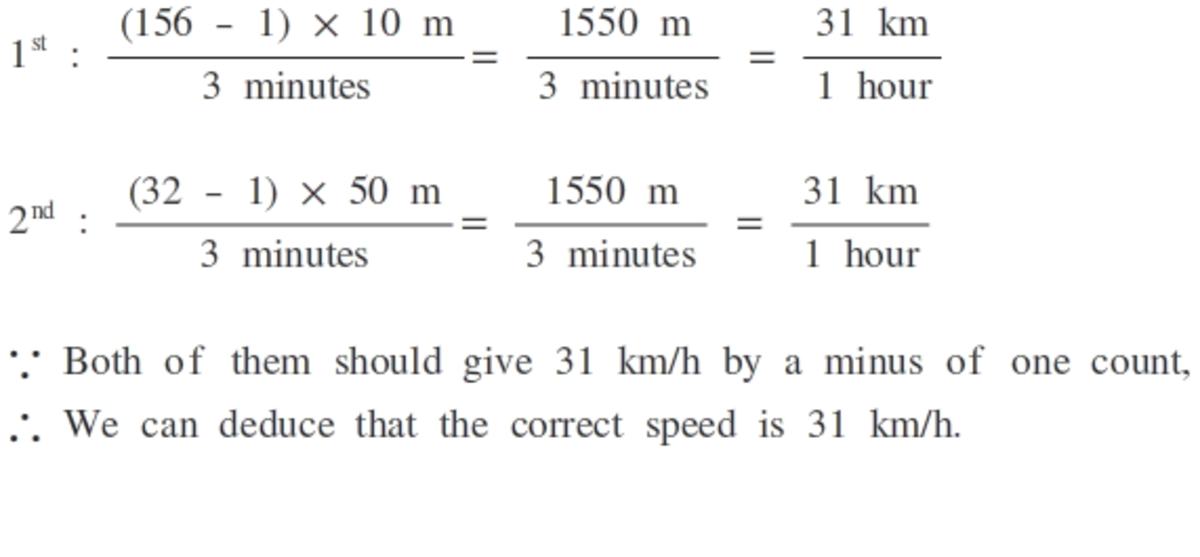Which one has measured correctly the speed of the train?
Two passengers with stop-watches decide to measure the speed of a train, one by the click of the wheels passing over the junctions between rails (knowing that the length of each rail is 10 m), the other by the number of telegraph-poles passing the window (knowing that the distance between them is 50 m). The first passenger starts his stop-watch on the first click and stops it on the 156th. He finds that 3 min have passed. The second passenger starts his stop-watch when the first telegraph-pole appears in the window and stops it when the 32nd pole appears. He too finds 3 min have passed. The first passenger calculates that the train's speed is 31.2 km/h, and the second that it is 32 km/h. Which of them has made a mistake and how? What is the real speed of the train?
This section requires Javascript.
You are seeing this because something didn't load right. We suggest you, (a) try
refreshing the page, (b) enabling javascript if it is disabled on your browser and,
finally, (c)
loading the
non-javascript version of this page
. We're sorry about the hassle.

Both passengers forgot to disconsider the first mark. Ex: if passenger one counts 3 clicks, it would be only 20m, not 30m (mark one = 0m, mark two = 10m, mark three = 20m). So, both have counted 1550m, divided by 180s (3min), 8.611111...m/s. Multiplied by 3.6 = 31km/h.